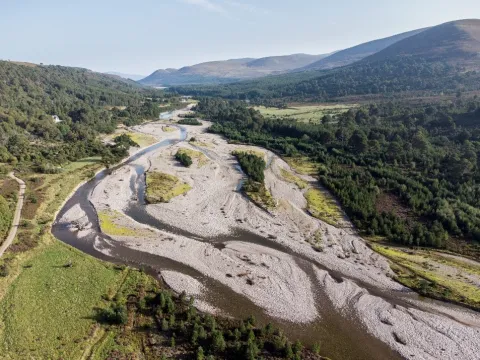
CREW Code: CRW2023_05
Theme: Hydrological Extremes, Coasts and Risk Management
Project status: Project complete. Click here to visit the publication page to view the project outputs.
Type of project: Capacity Building
Lead research team: The James Hutton Institute
Scotland’s climate is changing, and we expect to see further changes in seasonal precipitation patterns that may increase the frequency and severity of water scarcity conditions, including droughts. Drought is a prolonged period of abnormally low rainfall, leading to water scarcity and environmental stress (formally defined in Scotland as when river water levels are less than 5% of their normal flows, for more than 30 days). Overall, droughts are predicted to increase particularly in the eastern parts of Scotland. These changes are likely to affect water users in these regions, particularly agriculture (livestock, arable and horticulture) and the distilling sector.
The aim of this project was to provide summaries of the future predictions of water scarcity in Scotland and the impacts this may have, tailored to three groups of abstractors: crop producers, livestock producers and distilleries. The project summarised evidence on changes to the availability of surface waters and groundwaters for abstraction; as well as changes to climatic water balance for rainfed farming systems. This evidence was then put in the context of how the water resources are being used by the three groups and how future water scarcity may impact the sector.
The evidence review highlighted that there is likely to be overall deficit in climate-water balance during the summer months in eastern Scotland, with some uncertainty about how the shoulder months of April and September will be affected; that the number and duration of surface water drought events are likely to double by the middle of the century; and that there are questions about the resilience of groundwater supplies, particularly in areas with low storage and decreasing potential recharge. Overall, our farmers and distillers focus group participants were aware of water scarcity as a business risk. The irrigated crop sector and the distillery sector have invested in technological solutions, such as efficient irrigation systems, offline irrigation lagoons and thermal vapour compressing, whereas the rainfed farming systems identified fewer adaptation options. Several barriers to wider uptake of adaptation options were identified. Recommendations are provided, including the need for increased data on actual water used by abstractors, alongside expanding the monitoring and analysis of groundwater resources, to improve our understanding of the different dimensions of water scarcity; and ways to overcome barriers to uptake of the available adaptation responses.
This project has completed. Click here to visit the publication page to view the project outputs.